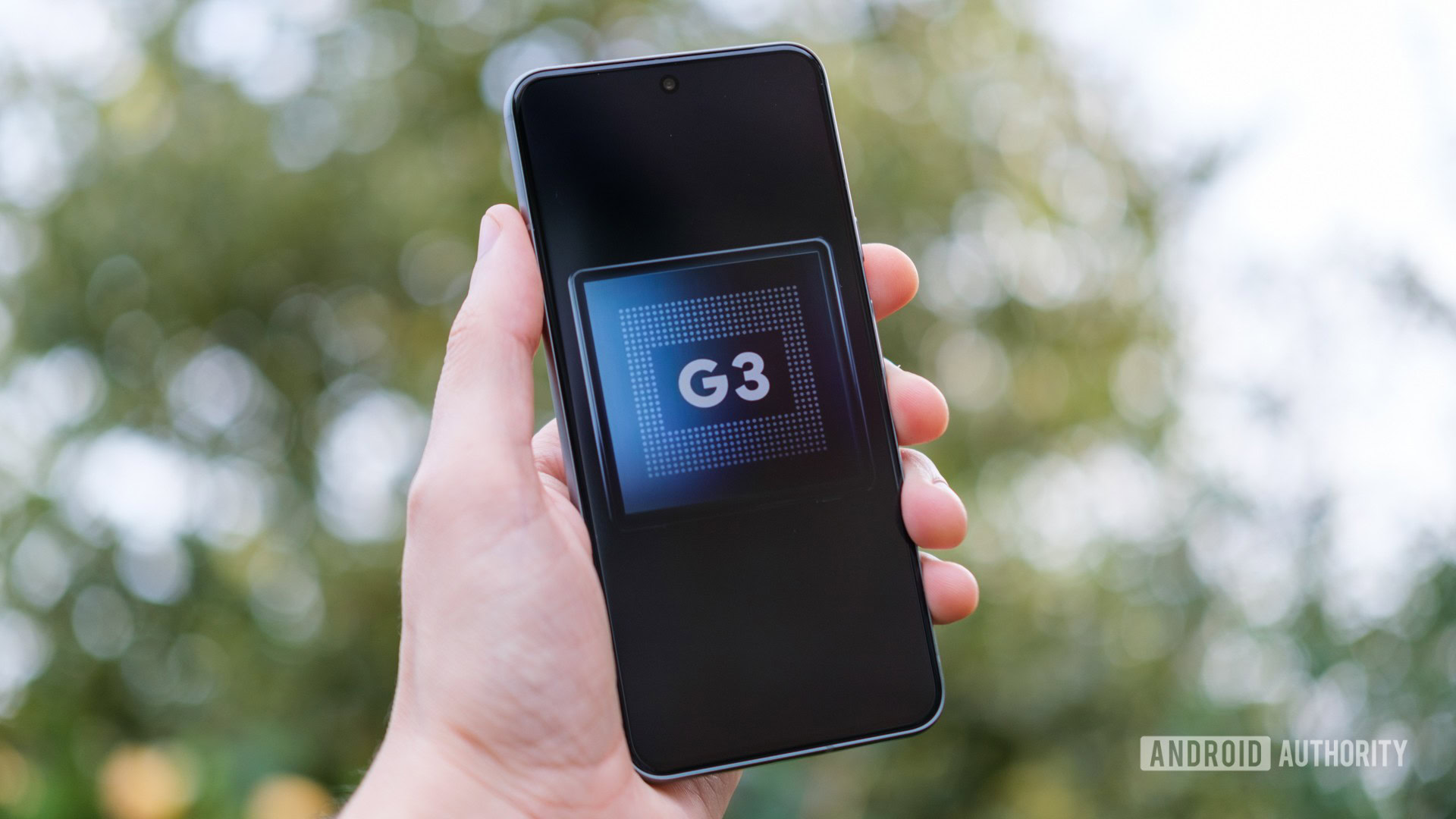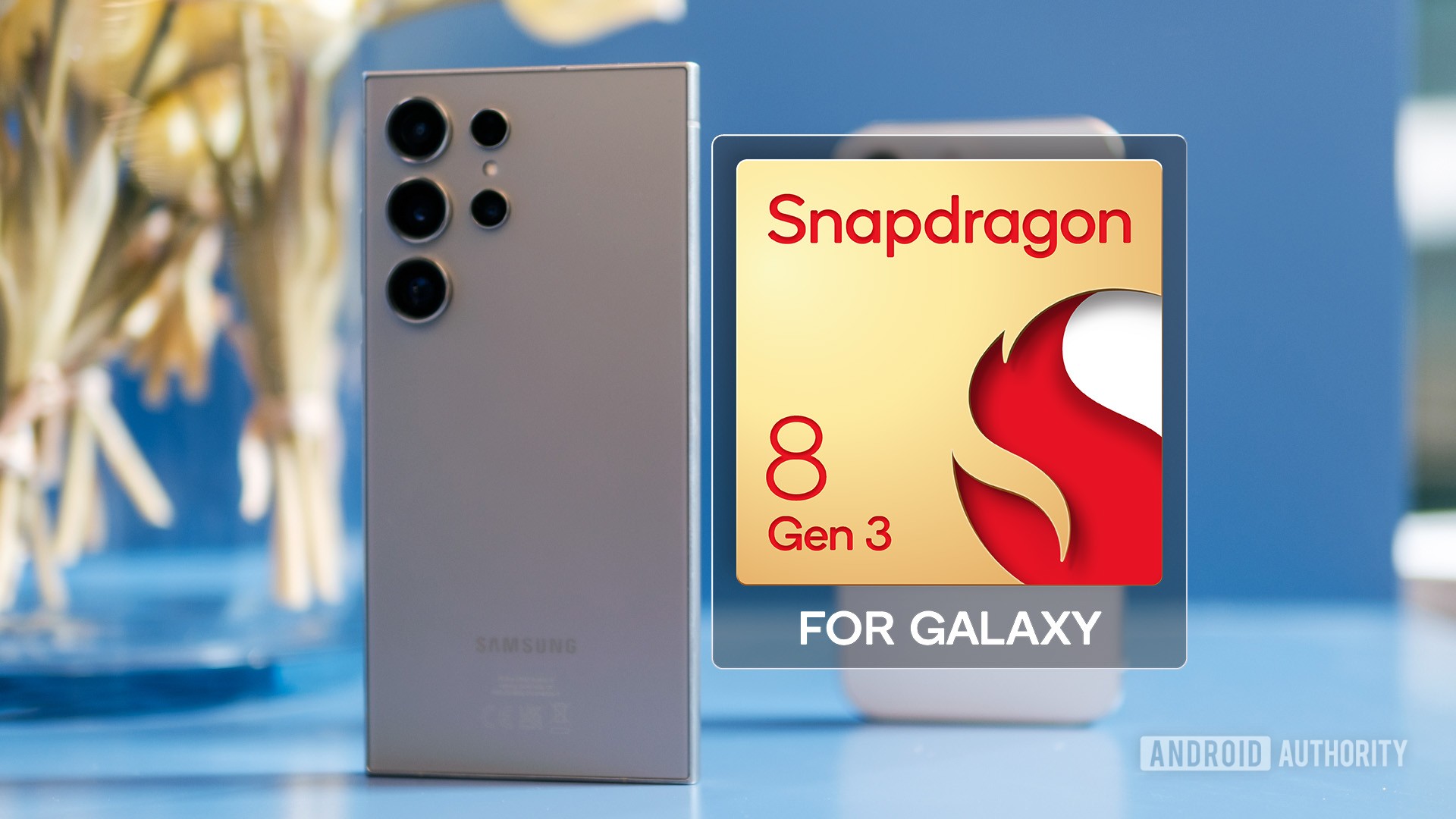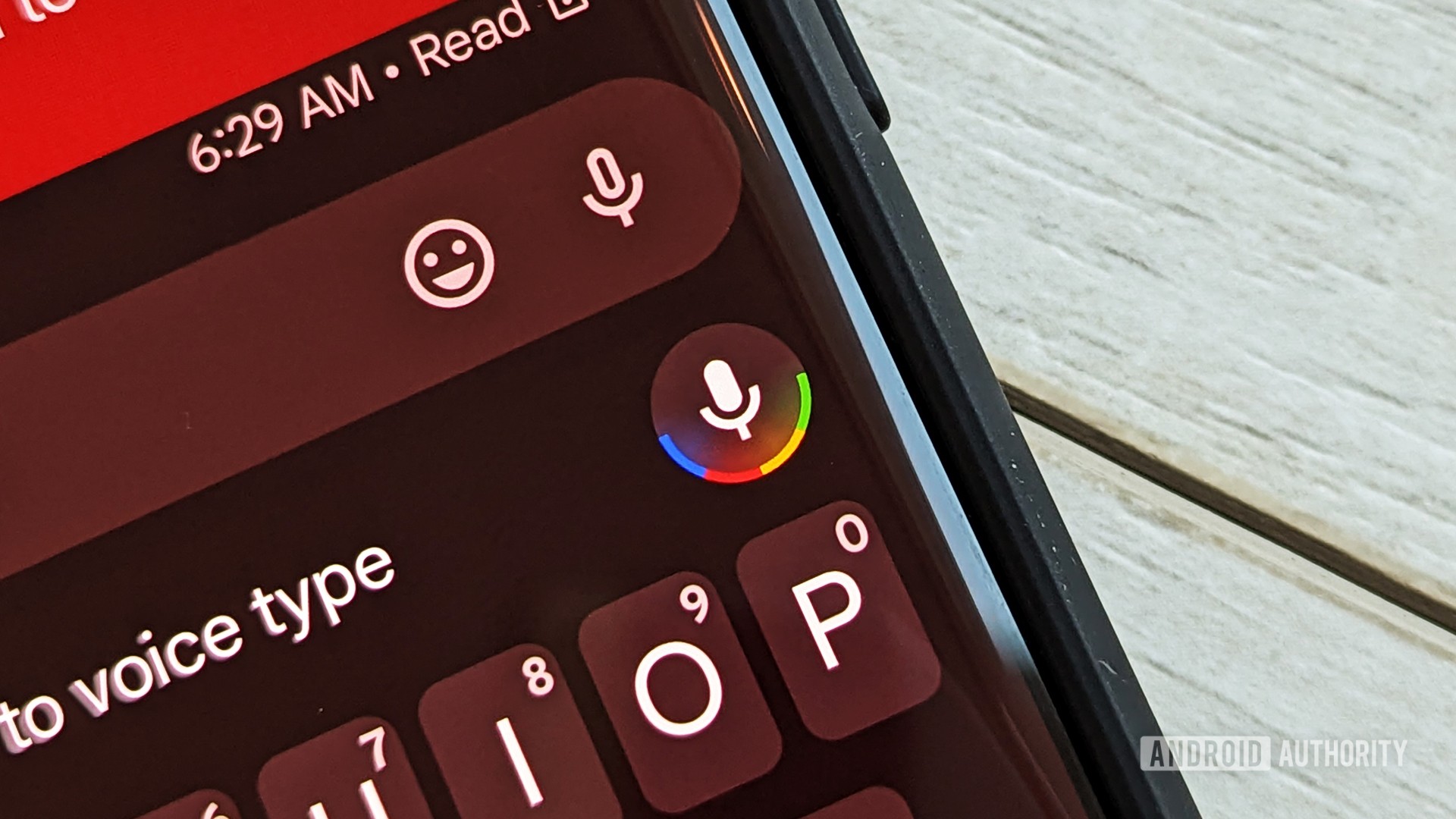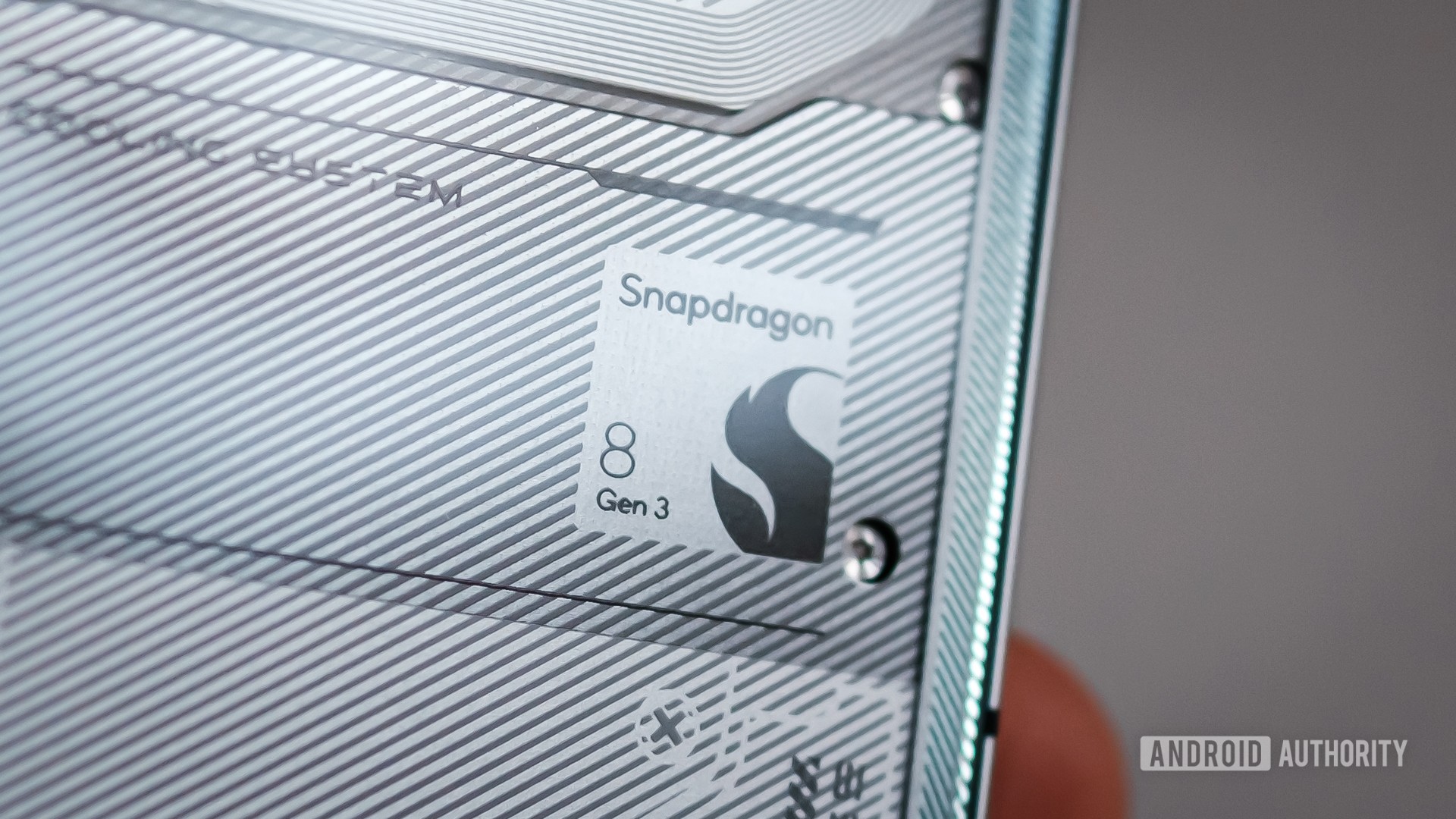Affiliate links on Android Authority may earn us a commission. Learn more.
Snapdragon 8 Gen 3 vs Tensor G3: Is Google's flagship chip outdated?

A few years ago, Google announced that it would no longer rely on third-party chipsets for its Pixel series of smartphones. The decision culminated in the development of Tensor, Google’s semi-custom chip built in partnership with Samsung’s chip division. That tradition continues with the latest Tensor G3 that powers the Pixel 8 series. But it didn’t take long for Qualcomm to steal the limelight with its announcement of the Snapdragon 8 Gen 3. Does that make Google’s Tensor G3 outdated or is it still competitive vs the Snapdragon 8 Gen 3? Let’s find out in this head-to-head comparison.
Snapdragon 8 Gen 3 vs Google Tensor G3: Specs
Google released the Tensor G3 alongside the Pixel 8 series on October 4, 2023. Qualcomm announced the Snapdragon 8 Gen 3 exactly twenty days later. Despite this proximity in release dates, however, both chips sport vastly different core configurations. Here’s a quick look at their respective spec sheets:
| Snapdragon 8 Gen 3 | Google Tensor G3 | |
|---|---|---|
CPU Config | Snapdragon 8 Gen 3 1x 3.3GHz (Cortex-X4) 3x 3.2GHz (Cortex-A720) 2x 3GHz (Cortex-A720) 2x 2.3GHz (Cortex-A520 Refresh) | Google Tensor G3 1x Arm Cortex-X3 @ 2.91GHz
4x Arm Cortex-A715 @ 2.37GHz 4x Arm Cortex-A510 @ 1.70GHz |
GPU | Snapdragon 8 Gen 3 Adreno (ray tracing support) | Google Tensor G3 Arm Mali-G715 |
AI | Snapdragon 8 Gen 3 Hexagon DSP | Google Tensor G3 Third-gen Tensor Processing Unit |
RAM support | Snapdragon 8 Gen 3 LPDDR5X | Google Tensor G3 LPDDR5X |
Video capture | Snapdragon 8 Gen 3 HEVC encode/decode, AV1 decode only | Google Tensor G3 HEVC, AV1 decode/encode |
4G/5G Modem | Snapdragon 8 Gen 3 X75 LTE/5G (integrated) 10,000Mbps down 3,500Mbps up | Google Tensor G3 Exynos 5300 10,000Mbps down 3,870Mbps up |
Other networking | Snapdragon 8 Gen 3 Bluetooth 5.4 Wi-Fi 7 | Google Tensor G3 Bluetooth 5.3 Wi-Fi 7 |
Process | Snapdragon 8 Gen 3 TSMC 4nm (N4P) | Google Tensor G3 Samsung 4nm |
With the Snapdragon 8 Gen 3, Qualcomm decided to drop a little core and add a fourth medium core. This results in a 1+5+2 core configuration. The Tensor G3, meanwhile, has lost one big core compared to last year and gained two medium cores, resulting in a 1+4+4 layout. However, the number of cores isn’t what’s most important here — it’s that Google has opted for now-last-gen Arm cores. On the other hand, Qualcomm embraced Arm’s newer 2023 cores.
The Snapdragon 8 Gen 3 includes one Arm Cortex-X4 big core, five Cortex-A720 medium cores, and two Cortex-A520 Refresh little cores. The Tensor G3, on the other hand, includes one Arm Cortex-X3 big core, four Cortex-A715, and another four Cortex-A510 cores.
Qualcomm has also clocked the cores significantly higher, with the big and medium cores almost all comfortably exceeding 3GHz. Google is far more conservative with its clock speeds, meanwhile, for reasons we’ll discuss later. The Tensor G3’s big core hits a peak of 2.91GHz and the medium cores operate at 2.37GHz.
Other key differences are found across the chips’ sub-components. Qualcomm relies on its proprietary Adreno GPU for graphics, while Google licenses Arm’s Mali architecture, with only the former implementing ray tracing. Their modems are different too, as are their choice of manufacturer, with Qualcomm opting for TSMC while Google relies on Samsung Foundries.
Snapdragon 8 Gen 3 vs Google Tensor G3: Benchmarks

As you’d expect given Qualcomm’s decision to use newer Arm cores, the Snapdragon 8 Gen 3 (we tested Qualcomm’s reference device) extends a massive lead over the Tensor G3. In Geekbench 6 multi-core, the Snapdragon chip is roughly 68% faster than the Tensor G3. The gap is smaller in single-core, but still meaningful, to the tune of 32%. In fact, Google’s 2023 chip fails to even surpass Qualcomm’s last-gen SoC.
In some graphical workloads, the Snapdragon 8 Gen 3 can be twice as fast as the Tensor G3. Retail devices like the Galaxy S24 Ultra don’t quite reach the same heights as we’ve found in our benchmarks. However, many 2024 smartphones still leave the Tensor G3 in the dust. Google’s chip performance may have indeed improved year-over-year but it’s still far from rivaling the best smartphone processors on the market.
The one saving grace is that the Tensor G3 performs more consistently in our stress test. While conducting the 3DMark Wild Life stress test, we noticed that Qualcomm’s reference device with the Snapdragon 8 Gen 3 would drop to half of its peak performance after nine minutes. The Pixel 8 Pro with its Tensor G3, meanwhile, saw a much more gradual decline. After nine minutes, the performance delta between the two SoCs shrank from over 200% to 27%.
All of this is to say that Google has prioritized power efficiency over raw performance. And to its credit, I’ve found that the Tensor G3 is performant enough for most day-to-day tasks. Qualcomm doesn’t have to be as conservative because it relies on TSMC’s efficient 4nm chip manufacturing node. Google’s partnership with Samsung Foundry, meanwhile, has long been suspected as the root cause of Tensor’s lackluster power efficiency.
The Tensor G3 is clocked lower to keep power draw and thermals in check.
Bottom line, you shouldn’t buy a Tensor G3-powered device if you’re a heavy gamer. The chip doesn’t support ray tracing either, which may become more important for games in the coming years.
For most other workloads, though, the Tensor G3 is a perfectly acceptable choice. At the very least, it’s no longer plagued by its predecessors’ thermal and battery life problems. Not to mention, Google may have another ace up its sleeve with AI. But does that advantage still hold going into 2024?
AI: The big differentiator…or not?

Ever since Tensor’s inception in 2021, Google has claimed that the chip series prioritizes AI capabilities over raw performance. Based on that claim, you’d expect the Tensor G3 to have a sizable lead vs the Snapdragon 8 Gen 3. However, Qualcomm has also baked a bunch of AI smarts into its SoC this year. It also doesn’t help that Google remains rather secretive about the inner workings of its TPU so we cannot make an apples-to-apples comparison.
Qualcomm says the Snapdragon 8 Gen 3 is powerful enough to run large language models (LLMs) like Meta’s Llama entirely on-device. It can also create AI-generated images via Stable Diffusion within a second. Google, meanwhile, states the Tensor G3 runs scaled-down versions of its high-end generative AI models.
The Snapdragon 8 Gen 3 is capable of generative AI and device makers seem interested this time.
Setting aside specs and raw horsepower for a second, it’s worth noting that not all phones will leverage the Snapdragon 8 Gen 3’s AI potential. After all, many Snapdragon-specific features see limited adoption every year as device makers skip implementing them altogether. However, Samsung and OnePlus have adopted some of the chip’s potential in the form of Galaxy AI and photo editing features. The Galaxy S24 series can even run Google’s Gemini model.
The Tensor G3 benefits from Google’s vertical integration and the TPU’s potential is more fully realized by the accompanying software on Pixel devices. Features like Gboard’s excellent speech-to-text, Best Take, generative Magic Eraser, and Video Boost either already exist or will come to Pixel devices shortly. Will rival Android brands create similar AI-powered experiences using the Snapdragon 8 Gen 3? Only time will tell.
Snapdragon 8 Gen 3 vs Google Tensor G3: Bottom line

The Snapdragon 8 Gen 3 is much faster than the Tensor G3 in benchmarks, making it the superior choice for power users. Price-conscious consumers, however, may find that the Tensor G3 affords decent performance at the Pixel 8’s $799 price tag. The chip will almost certainly find itself in the upcoming Pixel 8a as well, which should retail around $500.
The Snapdragon 8 Gen 3, meanwhile, is present in much more expensive devices around the $1,000 mark. The Tensor G3 is admittedly a tougher sell in the flagship segment, given that it’s bested by even the last-gen Snapdragon 8 Gen 2. However, it does power a range of Pixel-exclusive AI features that you won’t find anywhere else, at least for the foreseeable future.
So which chip should you prioritize for your next smartphone? It all depends on your expectations and use case. If you multitask all day and use your phone for demanding workloads, the Snapdragon 8 Gen 3 is the obvious choice. On the other hand, more sedate users will not find the Tensor G3 deficient or lacking. Google has also promised seven years of Android updates for the Pixel 8 family, longer than any other Android manufacturer. Which SoC would you rather have in your next smartphone?
Which SoC would you rather have in your next smartphone?
FAQs
No, the Google Tensor G3 is not based on an Exynos design, although it does use some Samsung-made components, such as its modem. Tensor G3 is a semi-custom chip designed with Google’s vision and TPU, built by Samsung’s chip foundry.
Samsung Foundry is contracted to make Google’s latest Tensor chips, with fabrication likely taking place in South Korea.
Every smartphone SoC has certain advantages and drawbacks, so performance will depend on the specific chips and use case.